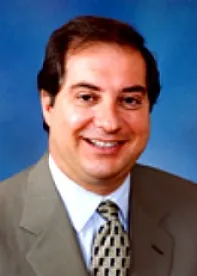On June 30, 2012, United States District Judge Rudolph Contreras, of the United States District Court for the District of Columbia, vacated most of the U.S. Department of Education’s (DOE) recent rules requiring for-profit colleges to report measurements of the gainful employment of former students. For-profit colleges must carefully analyze this decision to determine what they must do to comply with the portions of the DOE’s rules left intact, and what regulations may no longer be in effect.
The DOE’s Gainful Employment Regulations
Historically, Congress provided federal funds, under Title VI of the Higher Education Act, so that colleges and universities can “prepare students for gainful employment in a recognized occupation.” 20 U.S.C. §§ 1001(b)(1), 1002 (b)(A)(i), (c)(l)(A). For many years, Congress distinguished between “institutions of higher education” and “vocational schools.” In 1992, Congress changed these distinct terms and replaced “vocational schools” with the broader and more accurate terms “proprietary institutions of higher education” and “post-secondary vocational institutions.” 20 U.S.C. §§ 1088(b), (c) (1994). “Proprietary institutions” were limited to “for-profit schools,” while postsecondary vocational institutions were public or non-profit.
To determine whether for-profit institutions were fulfilling their Title VI obligations to prepare students for gainful employment, the DOE enacted regulations imposing reporting and disclosure requirements for gainful employment programs. On October 29, 2010, the DOE published three final regulations: the reporting and disclosure rule, 34 C.F.R. § 668.6, the program approval rule, 34 C.F.R. §§ 600.10, 600.20, and the debt measure rule, 34 C.F.R. § 668.7.
The reporting and disclosure rule required for-profit institutions to report certain information to permit the DOE to calculate “debt measures,” 34 C.F.R. § 668.6(a) and to disclose to prospective students data for graduation rates, tuition and fees, placement rates and median student loan debt. The “debt measure” rule set a minimum student loan repayment standard of 35 percent and a maximum standard of 30 percent of discretionary income and 12 percent of annual earnings for
debt/earnings rates. For for-profit institutions that failed these standards, they would have to warn prospective students that the program had failed and they must
disclose their remediation plans. A program that failed the debt measure in three out of four years would lose its Title VI eligibility. 34 C.F.R. § 668.7(i).
The DOE’s Regulations are Vacated In Part
As soon as the DOE’s regulations became effective, the Association of Private Colleges and Universities challenged them. It broadly alleged that the DOE lacked statutory authority to enact any rules concerning “gainful employment” and further asserted that the three specific regulations lacked sufficient rational basis.
The District Court rejected the challenge to the DOE’s authority. It held that the regulations were authorized by statute and fulfilled the objectives of the Higher Education Act to insure that for-profit institutions were appropriately using federal funds to prepare students for gainful employment. Therefore, the District Court held that the DOE had statutory authority to promulgate rules governing reporting and disclosures, program approvals and debt measure.
The District Court then focused upon whether the DOE’s specific rules should stand. As for the debt measure, it determined that the rule’s debt to income standards were based upon reasonable objective criteria. However, the second component - the debt repayment standard - lacked any rational basis. Because the debt repayment standard is intertwined with the debt to income standard, the court concluded that both were invalid. Similarly, the court struck down the reporting and program approval rules as they are dependent upon the debt measure.
The disclosure rule, though, which is directed towards prospective students and is not intertwined with the debt measure, was left intact.
What Does the Decision Mean?
The decision gives the DOE a choice. It can appeal the decision and seek an interim order allowing it to enforce the rules during the appeal. While an appeal is expected, it is unlikely that the rules will be enforced during its pendency. A more likely course is that the DOE will attempt a second round of rulemaking which will modify the debt repayment standards and develop a new criterion for the debt measure standard.
For-profit colleges have been given a small period to operate without complying with the specific gainful employment rules that have been struck down. As the DOE’s general rulemaking authority in this area has been upheld, expect the DOE to try to close the window through the enactment of new rules.



 />i
/>i

